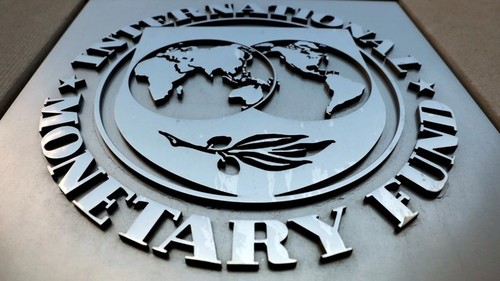 The headquarters of the World Bank in Washington DC, the US. (Photo: AFP/VNA) The headquarters of the World Bank in Washington DC, the US. (Photo: AFP/VNA) |
Outlooks on global economic growth this year and in the coming years were released in the first week of April by the World Bank (WB), the International Monetary Fund (IMF), the Asian Development Bank (ADB), and the World Trade Organization (WTO).
While recognizing positive signs in some regions and economies, they warned that challenges and risks to the global economy are at a high level.
Positive signs
The ADB has raised this year’s growth forecasts for developing Asian economies, mainly thanks to China’s easing of its COVID-19 restrictions and reopening of its border.
The outlook is for 4.8% growth this year after 4.2% growth in 2022. With reopening from COVID-19 in full swing, China is projected to grow 5% this year, much higher than last year’s 3%.
The World Bank released a report on Tuesday raising its economic growth forecast for Latin America and the Caribbean to 1.4%, up 0.1% from January’s estimate. For 2024 and 2025, the figure is 2.4%.
The report said regional economies have already recovered to their pre-COVID-19 level.
Germany, the EU’s largest economy, is forecast to achieve positive growth this year, despite many difficulties and challenges. A joint economic forecast by Germany’s leading economic institutes – Ifo Institute, Leibniz Economic Research Institute, Kiel Institute for the World Economy, and RWI Economic Research Institute – said the German economy will grow 0.3% this year and 1.5% in 2024. Forecasts late last year said the German economy would shrink 0.4% this year.
Economists say the positive signs will stimulate global trade and investment, but they also warn of risks and challenges to global economic recovery and growth.
 (Photo: Reuters) (Photo: Reuters) |
Risks and challenges call for caution
The April 2023 edition of Africa’s Pulse shows that growth across sub-Saharan Africa remains sluggish, dragged down by uncertainty in the global economy, the underperformance of Africa’s largest economies, high inflation, and a sharp deceleration of investment growth. Economic growth is expected to slow from 3.6% in 2022 to 3.1% in 2023.
The WB said the Latin American and Caribbean region is becoming less integrated. The region has limited investment in infrastructure and services.
In its latest report, the ADB warned that the conflict in Ukraine will worsen inflation, lead to new interest rate hikes, and adversely affect global growth and recovery.
The US Department of Commerce reported on Wednesday that the US trade deficit widened more than expected in February as exports declined.
Although Germany’s GDP is forecast to grow 0.3% this year, inflation will remain at about 6%, compared to 6.9% last year. This will slow growth momentum because high interest rates reduce access to capital.
The IMF’s financial experts warn that geo-political tensions and the fragmentation of the global economy will further increase financial risks and reduce foreign investment, asset prices, and lending capacity of banks. The IMF recommends that policymakers strengthen mechanisms to respond to crisis by strengthening coordination between central and local agencies.
Economies should also strengthen regional safety networks, through currency exchange systems or credit back-up lines from international institutions such as the IMF. They should also strengthen foreign exchange reserves, capital, and liquidity at financial institutions.